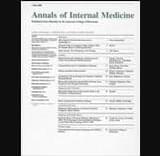Description: The American College of Physicians (ACP) developed this guideline based on the best available evidence on the comparative benefits and harms of pharmacologic treatments of acute episodic migraine headache, patients’ values and preferences, and economic evidence about these pharmacologic treatments. Methods: This guideline is based on a systematic review and network meta-analysis of the comparative benefits and harms of pharmacologic treatments of acute episodic migraine headaches, as well as systematic reviews of patients’ values and preferences and comparative cost-effectiveness analyses. The Clinical Guidelines Committee evaluated the following clinical outcomes using the GRADE (Grading of Recommendations, Assessment, Development and Evaluation) approach: pain freedom and pain relief at 2 hours; sustained pain freedom and sustained pain relief up to 48 hours; need for rescue medication within 24 hours; nausea, vomiting, and restored physical function at 2 hours; and overall and serious adverse events (AEs). Additional data on AEs were captured through U.S. Food and Drug Administration medication labels. Audience and Population: The audience for this clinical guideline is physicians and other clinicians. The population is adults with acute episodic migraine headache (defined as 1 to 14 headache days per month) managed in outpatient settings. Recommendation 1: ACP recommends that clinicians add a triptan to a nonsteroidal anti-inflammatory drug to treat moderate to severe acute episodic migraine headache in outpatient settings for nonpregnant adults who do not respond adequately to a nonsteroidal anti-inflammatory drug (strong recommendation; moderate-certainty evidence). Recommendation 2: ACP suggests that clinicians add a triptan to acetaminophen to treat moderate to severe acute episodic migraine headache in outpatient settings for nonpregnant adults who do not respond adequately to acetaminophen (conditional recommendation; low-certainty evidence).
